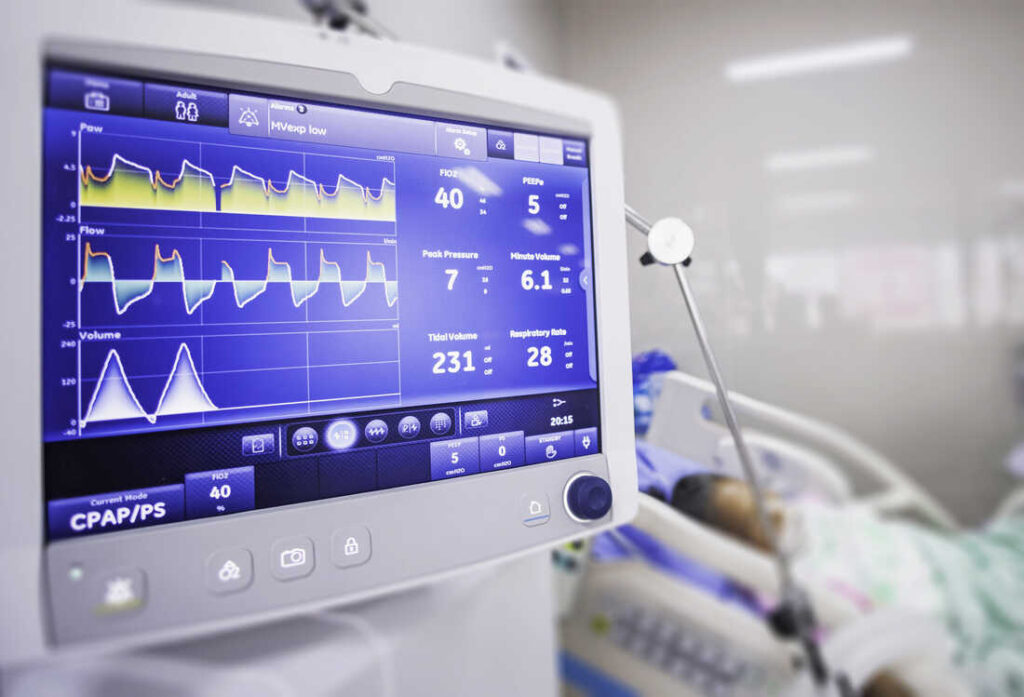Comprehensive dialysis patient monitoring tools
Home » Comprehensive dialysis patient monitoring tools
Comprehensive dialysis patient monitoring tools
Comprehensive monitoring of dialysis patients is crucial to ensure the effectiveness of treatment, detect potential complications, and enhance overall patient care. Here are key components of comprehensive dialysis patient monitoring tools:
Hemodialysis Machine Monitoring:
Continuous monitoring of the hemodialysis machine is essential to ensure proper functioning. Parameters such as blood flow rate, dialysate flow rate, and pressure gradients across the dialyzer should be closely monitored.
Vital Sign Monitoring:
Continuous monitoring of vital signs, including blood pressure, heart rate, respiratory rate, and oxygen saturation, provides a comprehensive view of the patient’s physiological status during dialysis.

Ultrafiltration Monitoring:
Monitoring the rate of fluid removal (ultrafiltration) is crucial to prevent complications such as hypotension and ensure the patient’s fluid balance is managed appropriately.
Access Site Monitoring:
For patients with arteriovenous fistulas or grafts, monitoring the access site is essential. Tools may include ultrasound for assessing vascular access function and monitoring for signs of infection or clotting.
Blood Pressure Trending:
Continuous blood pressure trending allows healthcare providers to identify trends and fluctuations, aiding in the early detection of hypotension or hypertension during dialysis.
Electrolyte Monitoring:
Regular monitoring of electrolytes, including potassium, sodium, calcium, and phosphate, is critical to prevent imbalances that could lead to complications such as cardiac arrhythmias or metabolic disturbances.
Temperature Monitoring:
Monitoring the patient’s body temperature is important to detect any temperature-related issues during dialysis, such as hypothermia or fever.
Continuous Venous Oxygen Saturation Monitoring:
Monitoring venous oxygen saturation provides insights into the adequacy of oxygen delivery to tissues, particularly important during dialysis to prevent hypoxemia.
Blood Gas Monitoring:
Continuous monitoring of blood gases helps assess acid-base balance and respiratory status, aiding in the detection of complications such as respiratory distress or metabolic acidosis.
Dialysate Composition Monitoring:
Monitoring the composition of the dialysate, including electrolyte concentrations and temperature, is crucial for ensuring that the dialysis prescription is accurate and tailored to the patient’s needs.
Cardiac Monitoring:
Monitoring cardiac parameters, including ECG and heart rate, is important to detect any cardiac arrhythmias or abnormalities during dialysis.
Patient Weight Monitoring:
Regular monitoring of patient weight allows healthcare providers to assess fluid removal and adjust ultrafiltration rates accordingly.
Remote Monitoring and Telehealth:
Telehealth platforms and remote monitoring tools allow healthcare providers to monitor dialysis patients outside the clinic, facilitating early detection of issues and improving overall patient management.
Access Pressure Monitoring:
For patients with central venous catheters, monitoring access pressures helps prevent complications such as access site thrombosis and ensures proper blood flow during dialysis.
Dialyzer Efficiency Monitoring:
Monitoring dialyzer efficiency and clearance rates helps ensure that the dialysis session is effectively removing waste products and toxins from the patient’s blood.
Patient-reported Outcome Measures (PROMs):
Incorporating patient-reported outcomes, such as symptoms and overall well-being, provides a more comprehensive understanding of the patient’s experience during and after dialysis.
Integration of these comprehensive dialysis patient monitoring tools supports a proactive and individualized approach to patient care, allowing healthcare providers to respond promptly to changes in the patient’s condition, optimize dialysis parameters, and improve overall treatment outcomes. Regular updates and optimization of these tools are essential to ensure they align with the latest standards and technologies in renal care.
Ready to Begin?
Start with our FREE Consultation!
Or call +880 1766-709223 or write us at info@qcconcern.org with any other questions.
